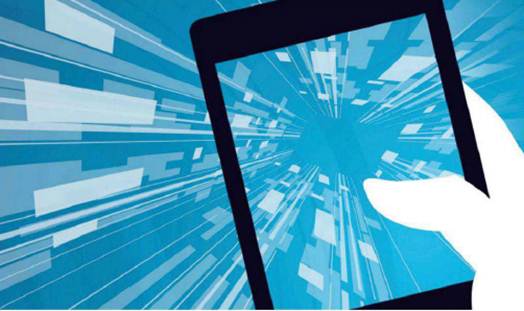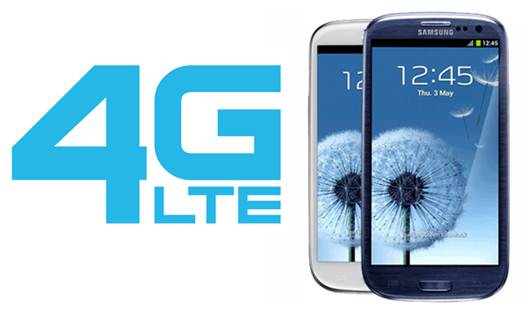The 4G mobile network is fast enough to let you enjoy
the web at Wi-Fi like speeds, but you’ll need compatible hardware to take
advantage.
You’ve probably heard of 4G, but what is it? In short, it’s
the name given to the fourth-generation mobile network, just as the previous
generation is known as 3G. Another piece of jargon, which you’ll often see
tagged on to the end of 4G, is ‘LTE’. This stands for Long Term Evolution, a
type of 4G technology. 4G LTE aims to offer faster, more reliable mobile
broadband to devices such as smartphones, tablets and laptops.

4G tablet in the
UK
In general, 4G is around five times faster than existing 3G
networks. It can theoretically provide download speeds of up to 100 megabits
per second (Mbps), but you won’t see this in real-world use.
Unless you buy a fourth-generation iPad (note that the
third-generation iPad doesn’t support the 1,800MHz 4G network offered by EE) or
iPad mini, your tablet won’t natively support 4G. We expect more 4G-enabled
tablets to arrive in 2013; in the meantime, you can use your tablet’s Wi-Fi
connection to take advantage of a 4G mobile hotspot, or tether it to a
4G-capable smartphone.
This is because 4G and 3G networks use different frequencies
to transmit data, so your modem must supports the new frequencies to be
compatible.
Although 4G is new to the UK and us Brits like to think
we’re running the latest technology, it’s actually been around for many years.
Two forms of 4G are in use today: WiMAX and LTE. You may have heard of WiMAX
before, since it was trialled in the UK in 2009. But WiMAX began three years
previous to that, with the first network launched by South Korean firm KT in
2006.
The first LTE network was deployed in Scandinavia in 2C09.
However, it was debatable whether the speeds on offer back then were worthy of
the 4G tag.
Across the Atlantic in the US, mobile network operator
Sprint has been using WiMAX since 2008, while MetroPCS was the first operator
to offer an LTE service in 2010. Verizon and AT&T also offer LTE.
Only the LTE version of 4G will be accessible in the UK. You
may have already seen several smartphones appearing on the market with an LTE
suffix appended to their product name. The Samsung Galaxy S III LTE is a
notable example, and not to be confused with the standard Samsung Galaxy S III.

C Spire Wireless
announces Galaxy S III as first 4G LTE handset
Us Brits are more accustomed to 3G connectivity, where
available. Hutchison Telecommunications unveiled the UK’s first 3G network
under the simple brand name ‘3’, often seen as ‘Three’.
Wideband Code Division Multiple Access (WCDMA) was the first
technical standard used for 3G. It’s now more commonly known as Universal
Mobile Telecommunications System (UMTS). More modern forms of 3G are High Speed
Packet Access (HSPA) and HSPA+. The latter allows for download speeds up to
42Mbps, which is twice that of which HSPA is capable. Common spectrum used for
3G connectivity includes 850MHz, 900MHz, 1,900MHz and 2,100MHz.
Connection speed
4G’s headline download speed is 100Mbps, and a blistering
50Mbps for uploads. This means 4G offers more than double the speed of the
latest 3G technology, and is many times faster than previous versions.
Of course, these speeds are theoretical, and won’t be
achievable in the real world. Regardless, 4G offers significantly faster
connection speeds than 3G, in downloads but even more so in uploads.
In practice, web pages are quicker to load, and there’s no
lag involved in streaming video and podcasts. You can quickly download large
email attachments and pull down other content stored in the cloud. Apps that
depend on online data, such as mapping programs, run more smoothly, especially
when zooming in or out. The speed difference is akin to switching from 3G to
Wi-Fi.
How easily you are able to stream video is a good measure of
the strength of your internet connection. The BBC recommends a minimum 3.5Mbps
to watch HD content online. Although 3G is theoretically capable of this, the
average achieved in the UK is 3Mbps.
For all those tasks for which you would normally toggle on a
Wi-Fi connection to achieve smooth performance, 4G will more than suffice. It
will allow you to feel as though you’re taking your home broadband connection
on the move. In fact, EE touts an average connection speed of between 8- and
12Mbps, which is faster than the 5.9Mbps average for ADSL home broadband.
Faster upload speeds are also be a boon. If you hate waiting
for pictures to upload to Facebook or Twitter, for example, you’ll find it a
much quicker process over 4G.
Technology
The main reason 4G is faster than 3G is Orthogonal
Frequency-Division Multiplexing (OFDM). It’s the same technology used in Wi-Fi,
ADSL broadband, digital TV and radio.
OFDM allows more data to be squeezed on to a given amount of
radio frequency. It also reduces latency and interference. Data is split up and
sent via small chunks of frequency in parallel, increasing the network
capacity.

The speed
difference is akin to switching from 3G to Wi-Fi.
Multiple-input, multiple-output, or Mimo, is another reason
4G is able to provide faster speeds. This is simply the use of multiple
antennae on both the transmitter and receiver to improve communication
performance.
Mimo allows more data to be transferred, without requiring
additional bandwidth or power. The most common configuration is 2x2 Mimo, found
in many smartphones and some tablets. A 4x4 setup is also possible, and
promises even faster speeds, but it’s still a little way off from making its
way on to devices. However, since different setups are possible, one handset
could potentially provide faster 4G speeds than another.
With 3G networks, most of us take international roaming for
granted. We expect to pick up emails and browse the web from whichever country
we’re in. Things are different with 4G.
Although 4G networks are accessible in many countries, a UK
4G device may not be compatible. It’s not a given that 4G will operate on the
same frequency in each country you visit; in these cases you’ll instead need to
use 3G. Even if the frequencies in use are a match, your network operator will
also need to have in place a roaming agreement, and offer data at a reasonable
price.